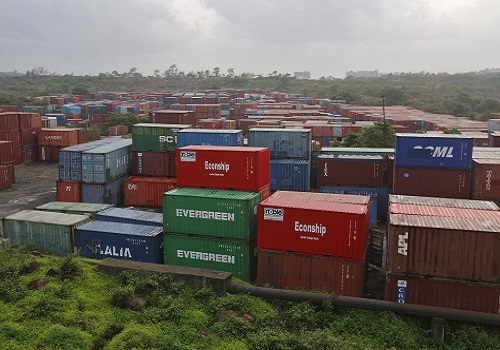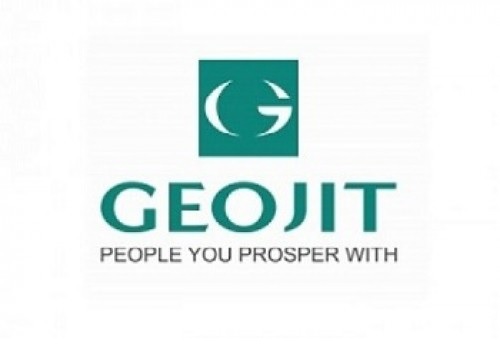Turmeric trading range for the day is 14846-15426 - Kedia Advisory

Follow us Now on Telegram ! Get daily 10 - 12 important updates on Business, Finance and Investment. Join our Telegram Channel
Gold
Gold prices rose by 0.46% to Rs.78,104, driven by weaker-than-expected U.S. private employment data for December, which increased hopes of a less aggressive Federal Reserve rate policy. The ADP National Employment report showed 122,000 private-sector jobs were added in December, falling short of the 140,000 forecast. Additionally, jobless claims came in lower than expected at 201,000, signaling a mixed labor market picture. Meanwhile, the minutes from the Federal Reserve’s December meeting highlighted expectations of easing inflation in 2024 but warned of potential price pressures due to Trump-era policy effects. On the physical market front, gold demand showed mixed signals. Indian gold dealers offered a $14 discount per ounce due to high local prices deterring buyers, while Chinese premiums rose to $4.50-$10 ahead of the Lunar New Year. The Perth Mint reported a significant 45% month-on-month drop in December gold sales, signaling subdued interest. Conversely, global central banks maintained strong demand, with net purchases of 53 tonnes in November. Poland and India were the largest buyers, adding 21 tonnes and 8 tonnes, respectively. China also increased its gold reserves for the second consecutive month in December, bringing total holdings to 73.29 million troy ounces. Gold experienced short covering as open interest fell by 0.83% to 11,418 contracts. Support is at Rs.77,835, with a break potentially testing Rs.77,570. Resistance lies at Rs.78,310, and a breach above could push prices to Rs.78,520.
Trading Ideas:
* Gold trading range for the day is 77570-78520.
* Gold prices gains after a weaker-than-expected private employment report for December.
* Fed officials expect inflation to ease this year but acknowledged the risk of stubborn price pressures
* Gold ETFs drew first net inflow in four years in 2024, WGC says
Silver
Silver prices gained 0.85% to close at Rs.91,711, driven by safe-haven demand as market participants assessed the Federal Reserve's cautious stance on rate cuts and the economic implications of President-elect Donald Trump's proposed policies. Fed Governor Christopher Waller's comments on expected inflation easing in 2025 provided some optimism for rate reductions, albeit at an uncertain pace. Geopolitical tensions and policy uncertainties have further fueled silver's appeal as a stable investment option. Strong industrial demand also supported silver prices, with its critical role in renewable energy technologies and electronics bolstering value. Supply constraints, including labor strikes and mining disruptions, have tightened the market, exacerbating a structural supply deficit. The Perth Mint reported robust silver sales of 1,057,311 ounces in December, a 55% year-on-year increase and the highest since October 2023. The Silver Institute projects the global silver deficit to shrink by 4% to 182 million ounces in 2024. Industrial demand is expected to reach a record 1.21 billion ounces due to growth in solar panel and electric vehicle applications, offsetting a 16% decline in physical investment. Increased mine output from Mexico, Chile, and the U.S., coupled with a 5% rise in recycling, will marginally ease supply constraints. Silver saw short covering, with open interest falling by 10.72% to 22,797 contracts. Support is at Rs.91,000, with further downside potentially testing Rs.90,285. Resistance lies at Rs.92,365, and a break above could push prices to Rs.93,015, maintaining a bullish outlook.
Trading Ideas:
* Silver trading range for the day is 90285-93015.
* Silver rose supported by safe-haven demand as investors absorbed the Fed's cautious stance on interest rate cuts.
* Fed’s Waller said inflation should continue to fall in 2025 and allow the central bank to further reduce interest rates, though at an uncertain pace.
* The ADP National Employment report showed the U.S. economy added 122,000 jobs in the private sector last month.
Crude Oil
Crude oil prices advanced by 1.03%, settling at Rs.6,372, driven by tightening supply conditions and a decline in U.S. crude inventories. Supply reductions from OPEC members, particularly Russia and Iran, have supported prices. Russia’s oil output in December averaged 8.971 million barrels per day, falling below targets, while OPEC's overall production also declined, partly due to losses in Iran. Additionally, sanctions on Russian and Iranian oil have further limited global supplies. In the U.S., crude inventories fell by 959,000 barrels to 414.6 million barrels last week, exceeding market expectations for a smaller draw of 184,000 barrels. Stocks at the Cushing, Oklahoma delivery hub dropped by 2.5 million barrels, reflecting robust demand. Refinery crude runs increased by 45,000 barrels per day, pushing utilization rates to 93.3%. Meanwhile, gasoline inventories surged by 6.3 million barrels, and distillate stockpiles rose by 6.1 million barrels, far exceeding forecasts. On a broader scale, U.S. crude oil production reached a record 13.46 million barrels per day in October, alongside the highest demand levels since the pandemic. Total product supplied increased to 21.01 million barrels per day, underscoring a rebound in demand, particularly for distillate fuel oil. The crude oil market exhibited short covering as open interest declined by 5.88% to 10,085 contracts. Immediate support is at Rs.6,304, with further downside potentially testing Rs.6,237. Resistance is seen at Rs.6,411, and a move above this level could target Rs.6,451.
Trading Ideas:
* Crudeoil trading range for the day is 6237-6451.
* Crude oil gains amid a tightening of supplies from Russia and other OPEC members and a drop in U.S. crude stocks.
* Oil output from the OPEC fell in December, partly due to losses in Iran.
* Concern of tighter supply from Iran and Russia due to sanctions is also boosting prices.
Natural Gas
Natural gas prices surged by 3.79%, settling at Rs.326 amid supply disruptions caused by freezing weather and robust global demand. Severe cold in the U.S. Northeast reduced daily gas supply to a six-week low of 102.6 Bcf, though this year's freeze-offs were less severe than previous years. Average January production remains at 105 Bcf/day, slightly below December's record 105.3 Bcf/day. LNG export flows rose to 15.1 Bcf/day, reflecting strong international demand, especially as Europe continues adjusting to reduced Russian supplies. Colder-than-normal weather is forecasted to persist through January 21, driving demand higher. The LSEG predicts total gas use could peak at 155.8 Bcf/day on January 14, close to record highs. U.S. utilities withdrew 40 Bcf of natural gas from storage last week, reducing total stockpiles to 3,373 Bcf, below market expectations of a 51 Bcf draw. This marked the eighth consecutive weekly inventory decline, narrowing the surplus over the five-year average to 6.5% and positioning stocks 0.1% below last year’s levels. In 2024, U.S. natural gas production is expected to ease to 103.2 Bcf/day as producers reduce drilling, while domestic demand is forecast to rise to 90.5 Bcf/day. Natural gas witnessed short covering as open interest dropped by 0.69% to 11,132 contracts. Immediate support lies at Rs.311.3, with further downside possible to Rs.296.7. Resistance is expected at Rs.334.9, and a breakout could test Rs.343.9.
Trading Ideas:
* Naturalgas trading range for the day is 296.7-343.9.
* Natural gas rose driven by disruptions in supply and strong global demand.
* US utilities have been withdrawing natural gas from storage, with colder-than-normal weather expected to persist through January.
* With extreme cold weather forecasted to continue, concerns over further supply tightening are pushing prices higher.
Copper
Copper prices gained 0.29%, settling at Rs.825, supported by a weaker dollar and expectations of less aggressive tariffs under U.S. President-elect Donald Trump. Market optimism grew on China’s pledges for increased monetary and fiscal stimulus to bolster economic growth. Demand for copper remains robust, driven by the expansion of electric vehicles and renewable energy technologies. In production updates, Chile’s copper output in November rose by 9.8% year-on-year to 488,519 metric tons, while China’s copper cathode production exceeded expectations, growing 0.94% month-on-month and 4.61% year-on-year. For the first 11 months of 2024, China’s unwrought copper imports totaled 5.13 million tons, up 1.7% year-on-year, reflecting domestic restocking amid lower prices. However, copper concentrate imports in November dipped 7.8% from the previous year. On the global stage, the refined copper market showed a deficit of 41,000 metric tons in October, a sharp improvement from September's 136,000 metric tons deficit, according to ICSG. For the first 10 months of 2024, the market reflected a surplus of 287,000 metric tons compared to just 9,000 metric tons in the same period last year. The copper market saw short covering, as open interest dropped by 3.55% to 5,761 contracts. Immediate support is at Rs.822, with further downside possible to Rs.819. On the upside, resistance is at Rs.827.7, and a breakout could push prices to Rs.830.4.
Trading Ideas:
* Copper trading range for the day is 819-830.4.
* Copper gains amid weaker dollar and hopes that President-elect Donald Trump's proposed tariffs would be less aggressive than promised.
* Markets are hopeful that Beijing will follow through on its recent promises of increased monetary and fiscal stimulus.
* Strong demand for copper, driven by the rapid adoption of electric vehicles and renewable energy technologies, also supported prices.
Zinc
Zinc prices rose 0.76% to settle at Rs.271.55, driven by optimism surrounding Beijing’s recent commitments to enhance monetary and fiscal stimulus to support economic growth. However, uncertainties around U.S. President-elect Donald Trump’s tariff plans continue to pose risks to the commodity market, keeping many investors cautious. On the inventory front, zinc stocks in Shanghai Futures Exchange warehouses fell by 20.9% week-on-week. China's refined zinc production in November increased marginally by 1,000 metric tons month-on-month but was down nearly 12% year-on-year, with cumulative production for January-November at over 5.6 million metric tons, marking a 6% year-on-year decline. In December, refined zinc production increased by over 20,000 metric tons month-on-month, reflecting a 5% growth, though the cumulative production for 2024 remained 6% lower year-on-year. Production exceeded expectations due to better-than-anticipated output from smelters in Qinghai, Inner Mongolia, Xinjiang, Hunan, and Shaanxi. Globally, the zinc market posted a deficit of 69,100 metric tons in October, up from 47,000 tons in September, according to the ILZSG. Refined metal production fell 1.7% during January-October, while mine production declined 3.8%, largely due to lower output in Canada, China, South Africa, and Peru. The market saw short covering, as open interest dropped by 13.63% to 3,219 contracts. Zinc is supported at Rs.269.4, with further downside possible to Rs.267.2. On the upside, resistance is at Rs.273.1, with a breakout potentially testing Rs.274.6.
Trading Ideas:
* Zinc trading range for the day is 267.2-274.6.
* Zinc gains as markets remain optimistic that Beijing will follow through on stimulus to support economic growth.
* However, ongoing uncertainties surrounding US President-elect Donald Trump’s tariff threats continue to pose risks to prices.
* Zinc inventories in warehouses monitored by the Shanghai Futures Exchange down 20.9% from last Friday.
Aluminium
Aluminium prices gained 1.06%, settling at Rs.242.4, supported by declining inventories in London Metal Exchange (LME)-registered warehouses. Available aluminium stocks fell by 16% to 244,225 metric tons, the lowest since May. This drop was attributed to 45,050 tons being earmarked for delivery from warehouses in Port Klang, Malaysia. The LME reported that 61% of the total aluminium stocks are currently under cancelled warrants, indicating restricted availability. Global aluminium production is steadily increasing, with expectations that December's output will surpass 6 million tons, setting a new record. China's December aluminium production rose by 4.13% year-on-year, with cumulative production for the year increasing by 3.9% despite some smelter cutbacks in Sichuan and Guangxi due to high input costs and technological transformations. Meanwhile, China exported nearly 5.5 million tons of unwrought aluminium and related products in the first ten months of 2024, marking a 17% year-on-year increase. On the demand-supply side, the global refined aluminium market recorded a shortfall of 40,300 tons in October, with production of 6.0856 million tons and consumption of 6.1259 million tons. The cumulative deficit for the first ten months stood at 332,600 tons, underscoring tight market conditions. The market saw short covering as open interest fell by 5.99% to 3,262 contracts. Aluminium has support at Rs.240.5, with a further downside target of Rs.238.6. On the upside, resistance is at Rs.243.4, with a potential move towards Rs.244.4.
Trading Ideas:
* Aluminium trading range for the day is 238.6-244.4.
* Aluminium gains as available stocks in LME warehouses fell to the lowest since May.
* LME data shows overall cancelled aluminium warrants at 380,050 metric tons, or 61% of the total stocks.
* Global primary aluminum production is growing steadily.
Cottoncandy
Cottoncandy prices eased by 0.42% to close at Rs.54,590 as global cotton production for the 2024-25 crop year is projected to rise by 1.2 million bales to 117.4 million. This increase is primarily attributed to higher output in India and Argentina. In contrast, North India's cotton-producing states - Punjab, Haryana, and Rajasthan - reported a sharp 43% drop in kapas arrivals until November 30 compared to last year, creating raw material shortages for ginners and spinners, particularly in Punjab. India's cotton imports are estimated at 25 lakh bales for 2024-25, up from 15.2 lakh bales last season, with around 9 lakh bales already arriving at ports by November 2024. The domestic closing stock for September 2025 is expected to decline to 26.44 lakh bales, compared to 30.19 lakh bales in the previous year. Global production increases for India, Argentina, Benin, and Brazil have contributed to the projected rise in output, while smaller harvests are expected for Mali and Burkina Faso. World consumption is forecasted to increase by 570,000 bales, driven by higher demand from India, Pakistan, and Vietnam, despite a reduction in Chinese consumption. The market saw long liquidation, with open interest remaining unchanged at 422 contracts. Cottoncandy prices face immediate support at Rs.54,560, with a potential downside target of Rs.54,530. On the upside, resistance is likely at Rs.54,610, and a breach above this level could push prices to Rs.54,630.
Trading Ideas:
* Cottoncandy trading range for the day is 54530-54630.
* Cotton dropped as Global cotton production is projected to rise by more than 1.2 million bales.
* India's cotton production in 2024/25 is likely to fall by 7.4% from a year ago
* Cotton production is projected to increase in China, Brazil, and Argentina, more than offsetting reductions in the US and Spain – USDA
* In Rajkot, a major spot market, the price ended at 25908.4 Rupees dropped by -0.27 percent.
Turmeric
Turmeric prices rose by 0.36% to Rs.15,200, supported by limited market supplies ahead of the new crop arrivals. Despite the current firmness, gains were capped as the crop condition remains favorable with minimal weather disruptions. Arrivals increased to 9,030 bags compared to 7,965 bags in the previous session, reflecting a steady flow of stocks. However, low stock levels in the market continue to provide underlying support to prices until fresh supplies begin. Crop acreage is estimated to have increased significantly, with a 30-35% rise in key growing regions such as Maharashtra, Telangana, and Andhra Pradesh. This has pushed the total sowing area to 3.75-4 lakh hectares, up from 3-3.25 lakh hectares last year. Despite this increase, prolonged vegetation due to extended rains has delayed harvesting, which could affect the timelines for new crop arrivals. Export demand remains a key highlight, with turmeric exports during April-October 2024 up by 6.57% at 108,879.96 tonnes compared to the same period last year. October 2024 exports rose by 57.22% year-on-year. The turmeric market is under short covering as open interest declined by 0.7% to settle at 11,385 contracts, while prices gained Rs.54. Immediate support is at Rs.15,022, with further downside potential to Rs.14,846. Resistance is seen at Rs.15,312, and a move above this level could push prices to Rs.15,426.
Trading Ideas:
* Turmeric trading range for the day is 14846-15426.
* Turmeric gains amid reports of low supplies till the arrival of new crop.
* However upside seen limited as turmeric crop is reported to be in good to excellent condition.
* In Indonesia, dry weather has accelerated harvesting, which is currently at peak levels.
* In Nizamabad, a major spot market, the price ended at 14199.75 Rupees gained by 0.23 percent.
Jeera
Jeera prices declined by 0.32% to Rs.23,360 as traders booked profits after recent gains driven by delayed sowing in Gujarat and Rajasthan. The sowing of jeera has been significantly impacted by higher temperatures, leading to poor germination and a delay of 20-25 days. In Gujarat, the largest producer, only 57,915 hectares have been sown as of November 25, far below last year’s 2.44 lakh hectares and the normal cropping area of 3.81 lakh hectares. India’s cumin seed production for 2023-24 rose to 8.6 lakh tonnes, up from 5.77 lakh tonnes in the previous year. However, production for the current season is estimated to decline by 10%, with Rajasthan’s cultivation area also expected to drop by 10-15%. Despite this, Indian cumin remains the cheapest globally at $3,050 per tonne, significantly undercutting Chinese cumin prices by $200-250 per tonne, making India the preferred export hub. Exports have been robust, with shipments during April-October 2024 rising by 77.37% to 135,450.64 tonnes compared to 76,367.90 tonnes in the same period last year. October 2024 exports were 161.04% higher year-on-year, supported by strong demand from Europe and other global markets, particularly amid Middle East tensions. Jeera witnessed fresh selling, with open interest surging 18% to 2,124 contracts, while prices declined by Rs.75. Immediate support lies at Rs.23,290, with further downside to Rs.23,210. Resistance is pegged at Rs.23,460, and a breakout above this could push prices to Rs.23,550.
Trading Ideas:
* Jeera trading range for the day is 23210-23550.
* Jeera dropped on profit booking after prices gained as sowing has been delayed
* Higher day temperatures in the past few weeks has impacted the seeding of jeera and has also led to poor germination in various places.
* Jeera exports during Apr-Oct 2024, rose by 77.37 percent at 135,450.64 tonnes as compared to Apr-Oct 2023.
* In Unjha, a major spot market, the price ended at 24172.95 Rupees gained by 0.02 percent.
Views express by all participants are for information & academic purpose only. Kindly read disclaimer before referring below views
























